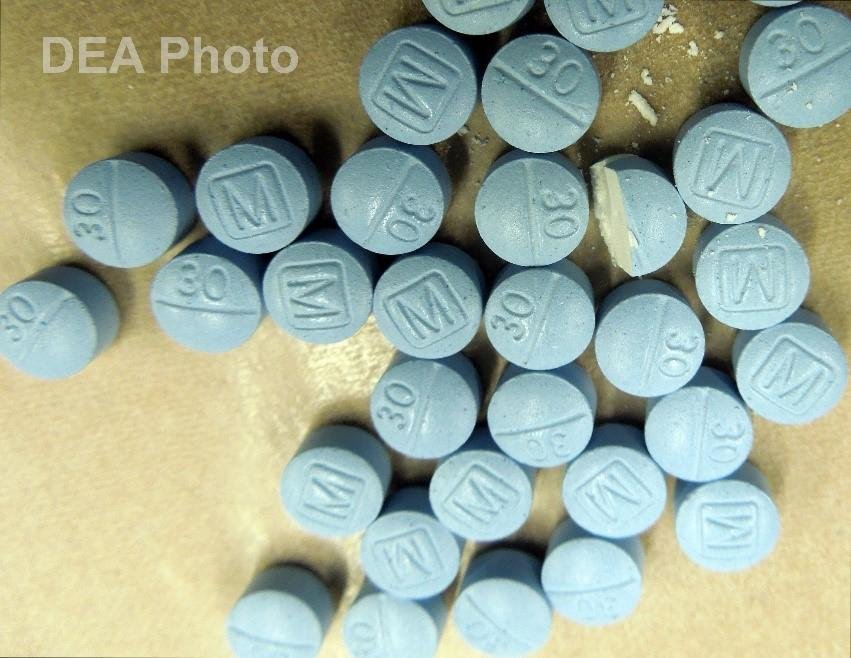9.6 Million Counterfeit Pills Made with Fentanyl Seized in 2021
/By Pat Anson, PNN Editor
Seven years after the Drug Enforcement Administration issued its first nationwide alert about the emergence of illicit fentanyl in street drugs, the fentanyl crisis continues to escalate and overdose deaths keep rising.
A new study by the National Institute of Drug Abuse (NIDA) estimates that 2,416 kilograms (5,326 pounds) of illicit fentanyl powder were seized by U.S. law enforcement agencies in the last three months of 2021. According to a DEA estimate of fentanyl’s lethality, that’s enough to kill 1.2 billion people.
That’s not the worst part, according to researchers. The number of counterfeit pills made with fentanyl is also growing and now make up about 29% of all seizures. Over 9.6 million counterfeit pills were seized by law enforcement last year.
“An increase in illicit pills containing fentanyl points to a new and increasingly dangerous period in the United States,” NIDA Director Nora Volkow, MD, said in a statement. “Pills are often taken or snorted by people who are more naïve to drug use, and who have lower tolerances. When a pill is contaminated with fentanyl, as is now often the case, poisoning can easily occur.”
In the last quarter of 2021, over two million counterfeit pills laced with fentanyl were seized – a 4,850% increase from the same period in 2018.
Counterfeit pills are particularly worrisome because they are easy to manufacture, transport and sell -- and most people who buy them have no idea if they’re getting a potentially lethal dose of fentanyl. Counterfeit pills known on the street as “Mexican Oxy” or “M30” look nearly identical to 30mg oxycodone pills.
Because fentanyl is up to 100 times more potent than morphine and 50 times more potent than heroin, it doesn’t take much to kill someone. The DEA estimates that nearly half of counterfeit pills contain at least 2mg of illicit fentanyl, a potentially lethal dose.
“What is particularly concerning is that fentanyl is now often pressed into counterfeit pills which resemble oxycodone (e.g., blue “M30″ pills), hydrocodone, or benzodiazepines such as alprazolam. This is alarming because a large portion of people who misuse psychoactive prescription pills such as opioids or benzodiazepines obtain them from nonmedical sources, thus increasing the likelihood of users unintentionally ingesting fentanyl through counterfeit pills,” lead author Joseph Palamar, PhD, a drug epidemiologist at NYU’s Grossman School of Medicine, reported in the journal Drug and Alcohol Dependence.
Illicit fentanyl was first detected in cocaine, heroin and other U.S. street drugs in 2014. Two years later, counterfeit pills made with fentanyl also began appearing, around the same time the CDC released a guideline that discourages doctors from prescribing opioids for chronic pain.
Faced with pressure from Congress to crackdown on painkillers, the DEA began reducing the legal supply of opioids in 2017. The agency has reduced opioid production quotas for five consecutive years, cutting the supply of hydrocodone and oxycodone in half.
In 2021, the DEA quietly acknowledged that drug cartels were actively targeting pain sufferers as potential customers. A DEA report said nearly two-thirds of people who misused pain medication “identified relieving pain as the main purpose” of their drug use.
Cutting back on legal opioid medication has clearly backfired. The CDC recently reported that over 105,000 Americans died of drug overdoses in the 12-month period ending October 2021, a record number. About two-thirds of those deaths involved synthetic opioids such as fentanyl.
The risks of fentanyl and counterfeit pills should be well-known by now, but Palamar and his colleagues say a surprising number of people are oblivious to the danger. They cited a recent study of nightclub attendees – a group at high risk of illicit substance use – which found that only half were aware that pills obtained from family, friends or dealers may be counterfeit versions made with fentanyl.
“Public education about the risk of non-pharmacy-sourced pills containing fentanyl needs to be more widespread,” they wrote. “These findings suggest that a substantial portion of people who use illegal drugs appear to be aware that non-pharmacy-sourced pills can contain fentanyl, but less experienced people who may be at risk for use require more education.”
Should the CDC guideline be changed to make it easier for doctors to prescribe opioids? Let us know what you think by taking PNN’s survey on the revised CDC guideline. Click here to get started.





